| |
|
 |
The World Health Organization states that 80 percent of the entire
world’s population uses herbal medicines. In Germany, every third
medicine prescribed is an herb! Also, herbs are now used by 33% of all
Americans.
Asthma, premenstrual syndrome, arthritis, menopausal symptoms,
depression, and many other problems are now being cured more and more
with the use of herbal medicines. Herbs can be found, in different
percentages, in tea, syrup, oil, pill and capsule, tincture, and liquid
form. Even modern medicines are jam-packed with herbs. In fact, 7000
compounds used in medicine today are taken from herbs. Moreover, half
the medical schools now offer lessons on alternative medicines which
include plants as medicines. One reason why herbs are preferred over
medicated drugs is that herbs have no side effects.
The use of herbs has always been on the rise throughout modern
history. Herbs are natural healers. It is because of this attribute that
so many people consume herbs. Also, they are very useful to our overall
health. In fact, fresh herbs have more antioxidants than some fruits and
vegetables! Antioxidants are the substances that fight heart diseases
and even cancer.
Rosemary, for example, is very rich in antioxidants. Basil, one of the
most consumed herb, smells very appealing to humans, but not so much to
house flies and mosquitoes and they feel repulsed by it. Herbs play a
big role in aromatic uses. They are used to make sachets to repel moths,
and they are even used in potpourri.
Herbs have been around human life for thousands of years. Herbal seeds
are discovered from cave settlements that were used as long as half a
million years ago. Furthermore, from the tomb of the very beautiful
Cleopatra, there were found herbal oils and creams.
Herbal Medicine, also called botanical medicine or phytomedicine
refers to the use of plant seeds, berries, roots, leaves, bark or
flowers for medicinal purposes. It is the oldest and most widely used
system of medicine in the world today. It is used in all societies and
is common to all cultures.
The History of Herbal Medicine –Plants have been used for medicinal
purposes long before recorded history, for example ancient Chinese and
Egyptian papyrus writings describe medicinal plant uses. Indigenous
cultures such as Africa and American used herbs in their healing
rituals, while others, developed traditional medical systems such as
Ayurveda and Traditional Chinese Medicine in which herbal therapies were
used systematically.
Scientists found that people in different parts of the globe tended to
use the same or similar plants for the same purpose. In the early 19th
century, when methods of chemical analysis first became available,
scientists began extracting and modifying the active ingredients from
plants. Many modern pharmaceuticals have been modeled on or derived from
chemicals found in plants.
Animals live in equilibrium with the plants surrounding them, using
these plants as sources of food and intuitively or through years of
trials and error, as medicine refers to health practices, knowledge and
beliefs incorporating plants, animals and mineral based medicines,
spiritual therapies, manual techniques and exercise, applied singularly
or in combination to treat, diagnose and prevent illnesses or maintain
well being.
The use of plants as medicine to cure or prevent illness and to lubricate
the wheels of social interaction at the interpersonal and group level is
a behavior that predates civilization. It is found in every society
irrespective of its level of development and sophistication. |
|
|
 |
|
 |
 |
|
 |
|
Herb Hunters take Risks to find Herbs and Bird's
Nests |
|
Mystique of the Green Dragon (Arisaema
dracontium) |
|
The Green Dragon is also called
Dragon Root |
|
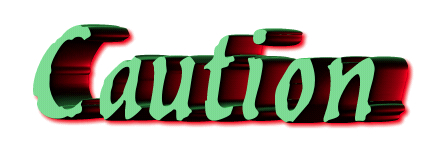 |
The Root can be Eaten as Food - but use
CAUTION
The Green Dragon has mineral crystals which make animals not want to eat
it. These are Calcium Oxalate Crystals, which cause
'needle-prick' pain in the mouth. This plant must be boiled or dried
before it is taken internally. |
|
Ancient Traditional Usage of Dragon
Root |
The Green Dragon Plant was once used as a medicinal and ritual plant
by the American Indian Tribes. As medicine the American Indians
traditionally used the dried, aged root for female disorders and the
leaves were chewed to treat asthma.
The Chinese use related Arisaemia species, which are taken internally
for epilepsy and paralysis. Also, it is used externally in China as an
ointment for swelling and small tumors. |
|
The Green Dragon is a Plant that
Stalks the Moist and Shady Woodlands |
Green Dragons are native to floodplain forests and the edges of ponds from Quebec to Minnesota,
and south to Texas and Florida.
The Green Dragon grows on the lower levels of hills, and usually near a
spring or other source of water that helps to keep the ground moist (not
soggy). Ginseng will also grow in places that the Dragon chooses to
inhabit, as long as the ground isn’t too wet. |
This exotic looking plant has a single leaf, but it looks as though
there are more, with 5 to15 leaflets arranged in a semicircle. When
viewed from the side, it is possible to imagine a silhouette of dragon
wings, with the central leaflet as the head.
The dark green leaf is huge, reaching more than a foot across on mature
plants. The stem is smooth, thick and tall. Plants range from 1to 4 ft
in height. |
| The leaf is the first part of the plant to grow. Then it is followed
by a stalk that comes off the leaf; a long, skinny tubule, 6 to 8 inches
in length, that is part of the flower stalk. The flower is held under a
kind of protective covering. The Green Dragon then develops these
brilliant red berries. The berries will ripen at the end of summer. The
fruit can look like fireworks. |
|
Ancient Herbal Resin Trees |
|
'Biblical Tradition'
"Magi presented Gold, Frankincense and Myrrh" to
the Infant Jesus |
|
Frankincense and Myrrh
Are used at Holiday Christian Masses
It is such an "Ancient Custom" that is linked to the 'First Christmas
Season'
Unfortunately - 'Fire Alarms' in many modern Churches 'Prohibit
its use in our Technological World' |
Frankincense and Myrrh - Are derived from the gummy sap
that oozes out of, respectively, the Boswellia and Commiphora trees when
their bark is cut.
Sap or Resin - Seeps out and hardens into "Tears". It is usually
scraped off the trunk. It can be edible and may be chewed like gum, but
more often it is burned, with Frankincense giving off a sweet, citrusy
scent and Myrrh producing a piney, bitter odor. Both Frankincense and
Myrrh are derived from plants that grow in the Middle East and Africa.
They grow in very harsh, dry climates. |
|
Frankincense Tree (Boswellia carteri) |
|
Both Frankincense and Myrrh have been traded in the
Middle East and North Africa for at least 5,000 years! |
| Ancient Egyptians - Bought entire boatloads of the resins
from the Phoenicians, using them in incense, insect repellent, perfume
and salves for wounds and sores as in the embalming process. |
|
The Fragrant Smoke is used in 'Rites to Sanctify'
and carry 'Praise and Prayer to Heaven' |
|
Frankincense Resin (Tears) |
| Frankincense - Comes from the first cuts of a thorny bark of
a shrubby plant, called Boswellia carteri that grows in the
Arabian Peninsula. Frankincense was used by ancient Israelites when they
burned it with their offerings of Lamb and the first fruits of the
harvest. Early Christians also used it to celebrate Jesus as the
"Lamb of God". |
|
Myrrh Trees (Commiphora myrrha) |
|
Smoke from these Resins - 'Clear the Air' for
Higher Thinking or Meditation |
| Myrrh Oil - Was said to have been used by ancients for a
rejuvenating facial treatment. Myrrh is used in toothpaste and mouthwash
as it can heal gums. |
|
At the time Jesus was Born . . .
Frankincense and Myrrh may have been 'Worth more than Gold' |
| Myrrh - Comes from a plant called Commiphora myrrha, a
native of Arabia, Ethiopia and most of northern Africa. In Arabic,
"Mur" means bitter. This refers to the taste, not the smell. It is
rarely used alone, but usually paired with Frankincense. |
|
Bible References: Frankincense and
Myrrh
Incense Burned in Jerusalem’s Temples During 'Ancient Times' |
|
Experience the Magic of these
'Ancient Herbs' Frankincense and Myrrh
Burn the Resin on Hot Coals as the 'Ancients'
A Distinctive Aroma and Mysterious Trails of Fragrant
Incense Smoke |
| Greeks and Romans - Imported massive amounts of the resins,
which they burned during cremations. These 'Ancients' also used them
medically as an antiseptic, anti-inflammatory and analgesic medicine.
It is said that Myrrh appears with more frequency than any other plant
substance in the writings of the Greek physician Hippocrates, in the
third and fourth century B.C. |
|
Example: Ritual Usage of Incense |
Ritual Incense Burner |
|
London England
Scientists Baffled After Finding 10th Century Medicine
Used Originally: Treat Eye Infections in the 10th-century
The Potion Kills Antibiotic-Resistant ‘Superbug’ MRSA
Has Shown the Potential to Eradicate the Superbug |
|
Video
The Ancient Remedy was uncovered in the British Library in a
leather-bound edition of what is considered one of the earliest known
medical textbooks, called 'Bald’s Leechbook'. The thousand-year-old
volume, containing the “Eyesalve” treatment, was translated at the
University of Nottingham.
The recipe calls for two species of Allium (Garlic and Onion or Leek),
Wine and Oxgall (Bile from a Cow’s Stomach), to be brewed in a brass
vessel. The instructions in the book called for the potion to be left to
stand for nine days before being strained through a cloth. The recipe is
fairly straightforward. |
|
 |
 |
| The University’s Microbiology Department recreated the recipe as
faithfully as they could. 'The Bald' gives very precise
instructions for the ratio of different ingredients and for the way they
should be combined before use, so they tried to follow that as closely
as possible. Afterwards, researchers then began to test the formula on
MRSA, Methicillin-Resistant Staphylococcus Aureus, cultures. MRSA is
commonly referred to as a superbug, as antibiotic treatments are largely
ineffective in treatment. |
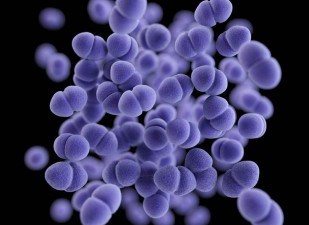 |
Not holding out much hope for the Ancient Potion, researchers were
amazed by the results of their lab tests. They found that Bald’s Eyesalve
is incredibly potent as an anti-Staphylococcal antibiotic in this
context. They were going from a mature, established population of a few billion
cells, all stuck together in this highly protected biofilm coat, to
really just a few thousand cells left alive. This is a massive, massive
killing ability. Scientists are not completely sure how the medicine works, but they have a few potential theories. There might be several
active components in the mixture that work to attack the bacterial cells
on different fronts, making it very hard for them to resist. Or, that by
combining the ingredients and leaving them to steep in alcohol, a new,
more potent bacteria-fighting molecule is potentially born in the
process. |
|
MRSA Bacterium |
What is Key to Understand |
| Although people refer to the period of
time this remedy was created as the “Dark Ages,” Ancient Knowledge
such as this cannot be discounted as holding extreme potential for the
advancement of science and technology.
When we realize there are
numerous alternative treatments and therapies that have been used
successfully for thousands of years, our potential opportunities for
optimal health grow exponentially. How many other amazing ancient cures
have been lost to time and are simply waiting to be rediscovered such as
this amazing potential medicine? |
|
How to Use White Oak Bark
|
|
Medicinal Healing Herb in a Compress
This is called a Fomentation
Combines - Properties of Herbs with Soothing Warmth of a Cloth Compress |
|
The mixture of these two creates a very simple yet
powerful natural remedy for allaying pain, irritation, inflammation, and
delivering moist heat to areas that need it |
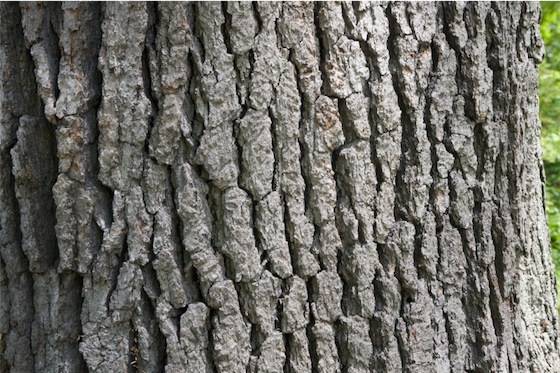 |
White Oak Bark Fomentations: For varicose veins, fever
blisters, herpes sores, ringworm, ulcers, skin disorders, swollen glands
(mixed with mullein and lobelia) goiter, mumps, poison oak, bee stings,
sores, scabs, burns, wounds, bleeding, canker sores, tumors, pain,
hemorrhoids, eczema, broken capillaries, and weak blood vessels.
White Oak Bark Fomentations contain astringent, antimicrobial, and
antioxidant properties, which are provided by the high concentration of
tannins and quercetin in the bark, along with vitamins and minerals.
Applying a hot, white oak bark fomentation to the skin, will enable the
herbal properties to bind with protein of the tissues, tighten them,
strengthen them and protect them from bacterial invasion and infection.
Water fully extracts White Oak Bark’s medicinal properties. You can
also drink a tea of White Oak Bark for even greater healing! |
| White Oak Bark Tea: Helpful with conditions like cleaning and
feeding the veinous structure, sore throat, mouth sores, as an herbal
diuretic, bladder infections, internal bleeding, etc., and White Oak
Bark tea as a douche for vaginal infections. |
|
White Oak Bark - Fomentation
Preparation |
| Decoction - Make an herbal tea with a stainless steel pot.
Using the herb’s bark, make the decoction by simmering 1 ounce of dried
herbs in 1 quart of distilled water, boiled down to 1 pint, or at least
simmered for 20 minutes. Strain the liquid. (If using the herb in powder
form, it’s helpful to put the herb in a muslin bag when simmering). |
Dip a 100% natural fibers cloth (cotton/linen/silk/wool) in the tea
(decoction) and slightly wring out.
Apply the cloth on the affected area of the body warm (but take care not
to burn the skin). If desired, add essential oils such as frankincense
or lavender to the cloth to enhance the healing.
Wrap the cloth with plastic wrap to hold in place and retain the heat
and moisture.
If using the fomentation during the day, replace with a new one once the
fomentation has cooled or dried out. If using the fomentation overnight,
leave fomentation on without changing it until the morning.
Use 6 days a week for as long as needed. |
 |
| As a specific remedy for Varicose Veins - Soak 100% white
cotton/wool socks (cut the toe off the cotton/wool socks and pull up
onto the leg), or 100% white cotton leggings in the White Oak Bark tea
and wear them all night. Make sure they are wrapped in plastic wrap to
keep in the heat and moisture overnight. |
|
Root of this Chinese Vine is used
for Fertility and Long Life |
|
Longevity Tonics - A class of
Chinese Herbs that provide Energy and Strength
Not a short burst followed by the inevitable crash from
stimulants . . . but something deeper and lasting |
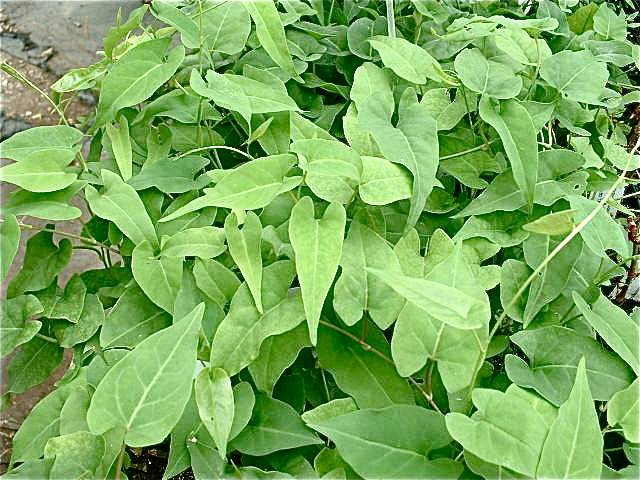 |
Polygonum multiflorum - Botanical
Name
One of the most
Prized Herbs in Chinese Medicine
This prolific vine has heart shaped leaves and goes by
several names: Chinese Knotweed, Fo Ti Tieng, Fleeceflower, and Jiaotang
(Twisting Vine) to name some.
One name describes how Fo Ti Tieng works as a medicine: He Shou Wu
(Black Haired Mr. He).
A monk advises Mr. He to eat the root, claiming that it will restore his
fertility. With nothing to lose, Mr. He gives it a try. After a few
weeks of taking the herb each day, Mr. He’s health problems vanish and
his youthful vigor returns. Mr. He marries a local widow and they have
19 children. His hair turns black and stays that way until his death at
160 years old. |
|
Polygonum multiflorum |
Why Do People Use Fo Ti Tieng? |
People today look to the root of the vine to treat infertility,
weakness, grey hair, and other symptoms associated with premature aging.
Many longevity tonics are roots with a sweet taste. Taken over time they
provide a sense of strength and stability to both the mind and body.
Ginseng is the most famous and expensive example, but Chinese herbalists
also place Fo Ti Tieng in the same class of top shelf Longevity Tonics.
These herbs captured the attention of Ancient Chinese Taoists who
considered them vehicles toward Enlightenment and Immortality. |
|
What is Fo Ti Tieng?
A plant native to China that is also found in Japan and
Taiwan. The medicinal part of the plant is the root. In traditional
Chinese medicine, it is often boiled in a liquid made with black beans:
this is known as Red Fo Ti. White Fo Ti is the unprocessed root.
Red Fo Ti is considered a tonic to increase vitality and energy,
strengthen the blood, kidneys and liver. White Fo Ti is used for
constipation.
Typically, the older the root, the stronger the
medicine. There are ancient claims of really old roots. According to
Ming Dynasty herbalist Li Shizhen, consuming a 150-year-old Fo Ti Tieng
root for a year will make one’s mouth sprout a fresh set of teeth. A
root of 200 years will provide a gait as quick as a horse. A
300-year-old root will grant earthly immortality.
Fo Ti Tieng roots are rich in iron, zinc, and antioxidants. Some
are sold raw, but most are prepared in a black bean sauce which is said
to make a more potent medicine. Fo Ti Tieng is sold in dry slices,
powder, pills, or tincture.
Fo Ti Tieng is non-toxic and generally well tolerated.
Like other tonic herbs, Fo Ti Tieng has to be taken in moderate doses
regularly over months and years to see significant anti-aging results. |
 |
|
How to Use |
Fo Ti Tieng Roots |
People take Fo Ti Tieng both alone and in herbal formulas for a
variety of ailments. A Chinese herbalist will often prescribe it for
signs of deficient Kidney Yang and Chi, which can manifest as a weak
back and knees, dizziness, and poor memory. It is used to boost immunity
and adrenal function, and relieve menopause symptoms, insomnia, and
fatigue.
Fo Ti Tieng has also demonstrated some ability to lower cholesterol, and
prevent cancer and Alzheimer’s disease, but most health claims still
center on fertility and the hair. Since the days of Mr. He, this herb
has maintained its reputation for banishing grey hair, reversing hair
loss, and improving sexual potency in both men and women.
A typical daily dose is three grams, three times a day. Fo Ti Tieng has
a slightly sedative effect so it’s good to take before bed. |
|
 |
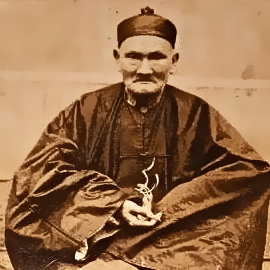 |
|
Polygonum Multiflorum Plant |
Li Ching Yun lived 252 years, had 23
wives, fathered 180 children
Due to daily consumption of Lycium Berries, Ginseng,
and Fo Ti Tieng
Also Tai Chi practice - He died in 1933 |
|
 |
Chinese Farmer
Unearths 500-year-old Root
Rare Chinese Medicinal Herb |
|
The Knotweed Root,
otherwise known as Fo Ti Tieng, can be
eaten cooked to prevent Cholesterol and boost the Immune System
or rubbed on the skin raw to help treat Ache and Athlete's Foot |
|
 |
 |
This Human-like Root was discovered in South East China by villager Zhong
Fusheng, of Lu Quan Village in Jiangxi province. Experts said that a
specimen this big could be more than 500 years old. The huge specimen
measured 36cm (14.5in) long, and weighed 3.75kg (8lbs).
It belongs to the Polygonum multiflorum plant, otherwise known as
'He Shou Wu' in Mandarin, which is used in traditional medicine.
Mr Zhong said he regularly goes to the mountains near his home to look
for medicinal herbs, and discovered this Knotweed Root. The 64-year-old
said the Human Shape became apparent as soon as he started digging
around the root, so he was careful to preserve its natural shape.
Deng Shubo, station manager of the Pingxiang Municipal Forestry Bureau,
identified the specimen and added that the root would usually take
around 50 years to reach the size of a fist. He said that a specimen
measuring 36cm would take at least 500 years to develop.
Chemicals in the root called lactins are believed to help prevent heart
disease by stopping plaque from forming inside arteries, while others
claim it can boost the immune system, and help ward off illnesses such
as cancer. |
|
 |
 |
|
Stress can be Relieved without the
Usage of Drugs or Alcohol
One way of coping is stopping what you are doing, focusing on
your breathing and taking slow, deep breaths
Or getting up, changing the scenery and going for a walk or a run |
|
If the Stress is Great - Drinking a
Cup of Tea using Relaxing Herbs is an Effective Remedy
The category of herbs for calming the nervous system are called
Nervines |
|
The nice thing about herbs for relaxation is they are
not addictive, are gentler than drugs and alcohol, and their side
effects are generally positive. Another benefit is that there are many
from which to choose, so by mixing and matching, a tailor-made formula
to fit you as an individual can easily be achieved. |
|
Lavender - Just a bit adds a nice aromatic
effect that is relaxing.
Dried Lavender Flowers can be put in a small muslin bag under the
pillow. |
|
Linden Flower |
Passion Flower |
|
Linden Flower - Is Good Tasting w/
Relaxing Effects |
Passionflower - Helps with Agitation
and Nervousness
Gently tune down an Overly Chatty Brain |
|
Fields of Oats |
Oats (Straw) |
|
Oat Straw - Is a mineral-rich herb that is
calming to the body and nervous system.
It tastes good and is helpful to bone health. |
|
Lemon Balm - Is soothing and up
lifting, and tastes good.
It smoothes out feelings of restlessness and agitation.
It has antiviral properties, particularly for cold sores of the herpes
virus. |
Rose Petals - Sprinkled into a tea
eases grief.
And contributes the Rose's scent. |
|
Saffron - Another nerve soothing
flowered herb.
Just a few of them brewed as tea contributes to a sense of well-being. |
Chamomile - Nervine for
oversensitive and restless adults and children.
Traditionally, taken for calming the stomach and nerves. |
|
Kava Kava Plant |
Kava Kava Leaves |
|
Upon discovery of Kava Kava in Polynesia - Captain
James Cook (1728 to 1779) gave it the name “Intoxicating Pepper” |
|
Kava Kava Scientific Name - 'Piper methysticum'
(intoxicating pepper) |
Kava Kava - Is another herb that can take the edge off. It is
grown in tropical places, like the Fijian Islands. Kava Kava
has been used ceremonially for centuries in the tropics for
relaxing, and lifting one out of anxiety to a more centered and relaxed
state of mind.
It is a very nice muscle relaxer. It is used in formulas for muscle
spasms. Excessive Kava Kava usage, as with alcohol, can cause
liver injury. Use in moderation at your own discretion.
The Kava Kava drink is neither an alcoholic beverage nor a
psychedelic drug. Nevertheless, it does have sedative and anaesthetic
properties. The effects of the Kava Kava drink may vary from one
person to another. Generally: if taken in a small amount the effects
are, a mild feeling of sleepiness and drowsiness, relaxation of the body
and the muscles, feelings of happiness, and numbness of the mouth,
tongue and throat. |
|
Kava Kava Drink |
Samoan Kava Kava Preparation |
|
Ancient Origins - Kava Kava
Ceremonial Usage |
Throughout the Pacific Islands, which figure so prominently
in romantic literature, it is nearly impossible to have a discussion
about the history of their various cultures without speaking of the
mysterious, cultivated shrub known as Kava Kava. It is thought
that the frequent consumption of Kava Kava is partially
why the people of the South Pacific Islands are known as the happiest
and friendliest people in the world.
Traditionally, on the islands, it is used before important religious
rites and other ceremonies. The Ancient Origins of Kava Kava
drinking is known to trace back at least 3,000 years and is associated
with both social and ceremonial function. It was, and is, highly valued
for its medicinal uses as a sedative, muscle relaxant, diuretic, and as
a remedy for nervousness and insomnia. But Kava is more than a
traditional remedy for a variety of ailments. This botanical marvel has
been used in parts of the Pacific at traditional social gatherings, and
in cultural & religious ceremonies to achieve a "higher level of
consciousness".
Kava Kava was also of great religious significance and was seen
to connect the user with the Ancestors and the Gods. It was not
merely an offering or sacrifice to the Spirits but a way of
gaining access to the Spirit World. It was used in healing
ceremonies and to obtain hidden or Esoteric Knowledge. |
|
 |
|
Red Clover Blood Cleansing Tea
|
|
A sweet, cooling and tasty herb, red
clover is clearing and mildly nutritive. It has affinities with the
respiratory, circulatory and lymphatic systems and is known as a
relaxing expectorant and a "Blood Cleanser" |
|
The Flower Tops are used to make the
Medicine |
|
It has been called “The herb of
Hippocrates”
Red Clover is one of the best alterative herbs, or blood
purifiers, known to man, and it has been included in anti-cancer
remedies for centuries. Even the National Cancer Institute has shown in
studies that red clover contains four anti-tumor properties. Thirty
three cultures around the world use this little reddish flower as a
natural cancer treatment.
It has a reputation as a remedy for coughs, skin issues,
and lymphatic indications.
As a cough remedy it is specially indicated with
irritated, dry, chronic coughs like bronchitis and whooping cough. It is
thought to help break apart and move thick stagnant blood & encysted
glands - places where there is a collected residue of septic or stagnant
material in the body that can cause illness. |
 |
| Particularly, red clover has an affinity for the salivary glands and
glands around the neck.
Red clover can help with skin problems like eczema and psoriasis,
especially in children. It has a more modern reputation as a
phytoestrogentic herb, and has been used traditionally in formulation
with other herbs as a cancer remedy for centuries.
|
|
According to the Ancient Sage Shen Nung
Ginseng is “Sweet, and slightly cold. Especially good for vital organs.” |
|
Ancient Chinese believed that Ginseng is effective
because it was "Taught by the Gods"
Ginseng was considered to be a "Symbol of Divine Harmony" and its 'Human
Form' was highly desirable |
|
The word Ginseng comes from the Chinese term "Rénshen",
which literally translates into "Man Root".
It is was given this name because the root of the plant looks like the
legs of a man.
Among all traditional medicine, Ginseng is the most famous and is the
most popularly used herb in China. |
|
The Asian Ginseng plant is a
flowering perennial, with a fleshy root, or rhizome, that is dried and
ground into a powder for use as an herbal remedy |
|
Ginseng Roots may be Chewed or Made
into Tea
It is believed that Ginseng was discovered in the
mountains of Northern China (Manchuria) over 5000 years ago. The Nei
Ching states that Ginseng strengthens the soul, brightens the eyes,
opens the heart, expels evil, benefits understanding and if taken for
prolonged periods of time will invigorate the body and prolong life.
This was related to a belief that the Ginseng Root resembled the human
body!
Because Chinese Emperors revered Ginseng and were more than willing to
pay for Ginseng with its weight in gold, a flourishing industry sprung
up centuries ago, attracting diggers, traders and robbers. China’s
demand for wild root afforded Korea the opportunity to maintain a
thriving export business that dates back to the 3rd century AD.
Unfortunately, this lucrative trade practically wiped out wild ginseng
in Asia and eventually came to a halt. In the sixteenth century Korea
began experimenting and cultivated the world’s first farmed root.
Modern science can analyze the ingredients in Chinese medicines, but
still not decipher its true essence. The essence of Chinese medicines
refers to the nature of yin and yang (cold, cool, warm, or hot) and its
taste (sweet, spicy, salty, acidic, or bitter). Each taste can be
further divided by nature and functionality.
The essence that Ginseng possesses has to do with the environment in
which it grows. Wild Ginseng typically grows on the slopes of mountains
at a height of around 1,600-3,600 feet. It is generally found growing in
the Changbai Mountains and Xiaoxinganling Mountains in Northeast China.
The Chinese character for “mountain” comes from the sign of “Ken” in the
Eight Trigrams. The Eight Trigrams are a set of eight symbols that help
explain the interrelationship between all things. This sign Ken
possesses more yin than yang and corresponds to the cold and shadowy
nature of a mountain. |
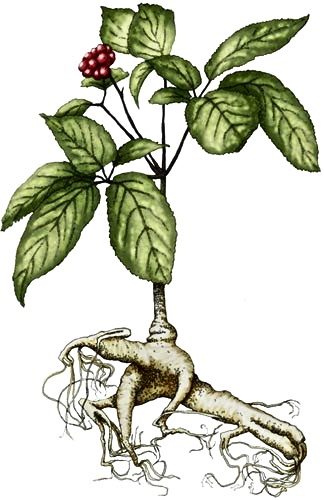 |
| Therefore, Ginseng has a slightly cold nature. But Ginseng grows on
the sloped part of a mountain, which is the yang part, so Ginseng
therefore has a slightly yang nature. In addition, the Ken sign belongs
to the element “Earth” which is slightly sweet, and thus Ginseng is
slightly to the yang side of sweet. |
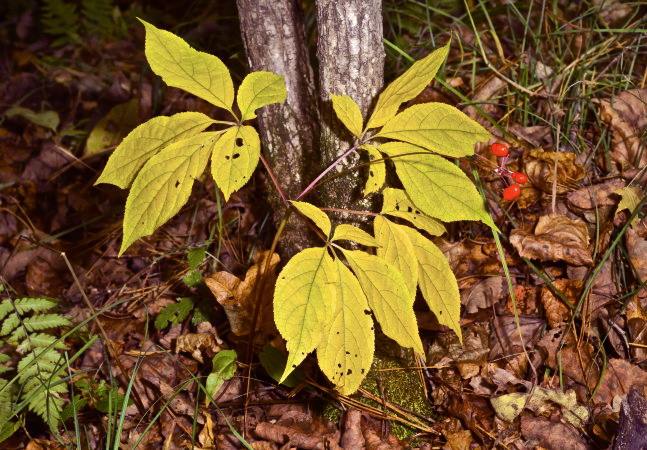 |
Among our organs, the Spleen and Stomach belong to the element
Earth, which is believed in Chinese Medicine to be the root of energy.
Therefore, the yang side of sweetness in Ginseng can fortify the yang of
the Spleen and Stomach, thereby sending energy throughout the entire
body. Regular use of Ginseng helps protect the Spleen and Lungs.
Ginseng use also raises energy levels, can help stop internal bleeding,
and is a remedy for diarrhea. For treating asthma and cough, combine
with ginger and walnuts. For treating chronic cough or weak lungs,
combine with mulberry bark. For treating gastric ulcer pain, combine
with slippery elm.
Ginseng is commonly used for its rejuvenating powers. Ginseng provides
an energy boost, prevents fatigue, lowers blood sugar and cholesterol
levels, reduces stress, promotes relaxation, treats diabetes, stimulates
the immune system as it enhances anti-inflammatory effects, slows the
aging process, improves vision and hearing, increases blood circulation,
builds physical stamina, and treats sexual dysfunction in men. |
| The Ginseng plant is not easy to grow and Ginseng takes six years to
mature. This is why it is an exceptionally valuable plant. The plant can
grow up to three feet tall, and is known for its odor and spicy taste. |
|
Kaunch Beej |
Cinnamon |
Nutmeg |
|
The root, leaves and seed have several benefits. They
can be used as laxatives, and can cure ulcers. Kaunch Beej’s roots and
leaves are the source for herbal aphrodisiacs. Due to the purging and
stimulating effect of Kaunch Beej they are instrumental in boosting your
sex life. |
Spice that is used in curries and in
dessert. Cinnamon is also used for relief from common cold and cough. It
is effective in treating toothache, muscle spasms and skin diseases. Due
to cinnamon’s anti-inflammatory properties, it can improve circulation
of the respiratory tract and improve blood circulation, making it an
effective aphrodisiac. |
This herb is used as a spice and also used in
desserts. Nutmeg is a good home remedy, which treats headaches, stomach
ailments and improves circulation. Nutmeg also has anti-inflammatory
properties, which improves blood flow to the genitals, thereby giving
you heightened sexual experience.
|
|
Saffron |
White Lotus |
Shoe Flower |
|
Saffron helps improve one's mental state and reduces
depression. It can also be used to treat colds, insomnia, asthma, sores
and last but not the least, saffron is an aphrodisiac. |
This is one of the best herbs for healthy living and
is also an aphrodisiac. The seeds of the white water lotus has a
positive effect on one's sex life. |
Hibiscus or Shoe Flower, as it is popularly known in
India, is great for treating ailments like headaches, hair care and even
mumps and is an aphrodisiac. |
|
Golden Eye |
Peepal Tree |
Meswak |
|
Golden Eye grass has properties, which boost one's sex
drive and clears out impurities from the body. |
Found throughout India. Root and the bark of the
Peepal Tree is an aphrodisiac. Also used to treat inflammation. The
fruit is a laxative. |
The bark of this tree is used as a toothbrush as it
promotes healthy teeth. The fruit has aphrodisiac properties. |
|
Bamboo Leaves |
Wrightia Tinctoria |
Rose Petals |
|
The leaves of the bamboo shoot has a cooling effect.
It relieves one from constipation, is rich in protein, is a diuretic and
also is a sex enhancing ingredient. The anti-inflammatory property is
what boosts one's sex life |
Wrightia Tinctoria or Stri Kutaja is
mostly available in the hilly regions of India. Besides being an
aphrodisiac the leaves and seeds can be used to reduce hypertension,
constipation and cure toothaches. |
Roses have several medicinal properties, one is that
roses are aphrodisiacs. Roses are used in several beauty products and
they can also be used as a digestive. Roses are also anti-inflammatory,
which improves blood vessels and increases blood flow to the loins. |
|
Indian Ginseng |
Nut Grass |
White Lily |
|
Ashwagandha or Indian Ginseng is often used in
Ayurveda to treat anxiety, arthritis, memory loss, improve haemoglobin
and the immune system. Ashwagandha also helps relax the nerves, making
it an important aphrodisiac. |
Nut Grass is an aphrodisiac with anti-fungal and
antispasmodic properties.
|
This is another flower, not only gorgeous, but also
has aphrodisiac properties. White Lilies are anti-inflammatory and
soothing, which are beneficial for improving one's sex drive and
increasing one's sexual performance. |
|
This Tibetan Fungus Now Costs Tens
of Thousands Per Pound |
|
Mycelium are some of the Most
Mysterious Life Forms on Earth |
|
One of the World’s Strangest Fungi
comes from Tibet
Tibetans call it Yartsa Gunbu "Summer Grass-Winter Worm" |
| Mycelium is the mass of branched, tubular filaments (hyphae)
of fungi. The Mycelium makes up the Thallus, or undifferentiated body,
of a typical fungus. It may be microscopic in size or developed into
visible structures, such as brackets, mushrooms, puffballs, rhizomorphs
(long strands of hyphae cemented together), sclerotia (hard, compact
masses), stinkhorns, toadstools, and truffles. At a certain stage it
produces spores, directly or through special fruiting bodies. |
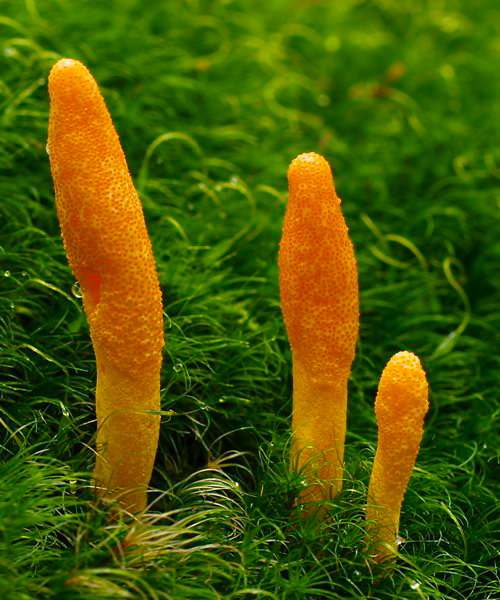 |
Yartsa Gunbu is a Parasite that Infects Insects. To make
Yartsa Gunbu, the victims must be Ghost Moth larvae. Rather than
spinning a cocoon, the Ghost Moth caterpillar undergoes its
transformation by burrowing underground, where it sometimes becomes
infected by Yartsa Gunbu spores lurking in the soil. After the fungus
devours the insect’s insides, a club shaped structure sprouts from the
insect exoskeleton.
Strange that such a cruel fungus could have such a beneficial effect on
the human body, but for centuries Tibetan and Chinese doctors have
considered Yartsa Gunbu a very precious medicine. It is used to improve
breathing, metabolism, sexual function, mental clarity, and more.
Traditional Tibetan and Chinese Medicine - Yartsa Gunbu is the
ultimate remedy to treat problems in the lung and kidney systems, such
as asthma, emphysema, renal failure, back ache, fertility, and fatigue.
Like ginseng, the caterpillar fungus has long been a favorite of the
elderly because of its ability to increase energy and stamina.
The fungus has demonstrated immune modulating, anti-viral, anti-cancer,
antioxidation, and cholesterol reduction activity. It has also been
shown to improve digestion and detoxification.
Despite claims that the caterpillar fungus originated in Chinese
Medicine, Tibetans were using it long before. The ancient Chinese were
familiar with a Cicada-based Cordyceps Fungus, but evidence suggests
that they were unaware of the Caterpillar Fungus until the late 1600s. |
| The first known writing on Yartsa Gunbu comes from a Tibetan
physician and lama of the 1400s. who described it as a “marvelous
medicine” in many regards, but primarily a sexual tonic. Later, Chinese
doctors began singing similar praises. Traditionally, Yartsa Gunbu is
used more like a food than a medicine, and is often added to soup with
pork or chicken. One old recipe calls for inserting the Caterpillar
Fungus into a duck’s stomach and roasting the whole bird. |
| Yartsa Gunbu has a tonic harmonizing effect. Those familiar with its
power consider it one of the best tonifiers known to man. In Chinese
Medicine terms, Yartsa Gunbu strengthens the body’s essence and Chi,
nourishing the source of life itself. In general, a larger caterpillar
fungus fetches a higher price. Specimens where the fungus separates from
the insect's body loses much of its value |
|
Caterpillar Fungus Prices Explode |
| Tibet has enjoyed a vigorous Caterpillar Fungus trade with China for
centuries, but in recent decades prices have skyrocketed. A pound of
Yartsa Gunbu was less than two dollars in the 1970s, and close to $100
in the 1990s. Today, a pound of high quality specimens could sell for as
much as $40,000 or more. Total revenue from Yartsa Gunbu comes to about
a $1 billion a year. |
|
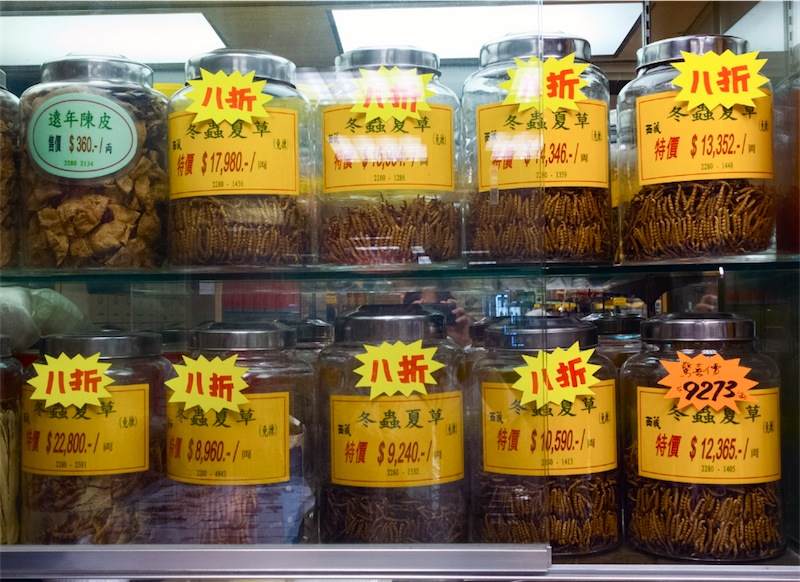 |
The story of Yartsa Gunbu’s meteoric rise in cost involves several
different factors. At the dawn of the new millennium, when Viagra was
wooing the West, the Caterpillar Fungus’ siren song called to wealthy
men of the East.
While Yartsa Gunbu had been treasured for centuries, in the late 1990s
it became a status symbol among the Chinese elite. Its traditional
reputation as a sexual tonic was a large part of its allure, and soaring
prices made it exclusive. Fine specimens are often given as gifts to
flatter and win favor with powerful men. This move from ancient
medicine to high end trend has dramatically changed the Tibetan economy.
In the rural grasslands of the Tibetan plateau where the Caterpillar
Fungus is found, people whose only income once came from the proceeds of
yogurt, yak butter, and wool suddenly became flush with cash.
Thanks to the boom, rural Tibetans can now purchase modern homes, flat
screen TVs, iPhones, and get access to loans. Today, 40 percent of rural
cash income from the Tibetan Autonomous region is thanks to the Yartsa
Gunbu harvest. This new found wealth has been used to build schools and
modern infrastructure in rural Tibet, as well as repair many of the
ancient temples ruined by the Chinese communist army in the 1950s.
But this fungal gold rush also has a dark side. Disputes over
Caterpillar Fungus hunting territory have led to several murders. |
|
 |
|
Yartsa Gunbu Store - Central Lhasa in Tibet |
|
Rosemary: Herb of Remembrance |
|
According to Legend - To ease Life
on Earth expelled from Paradise (Adam & Eve and Progeny)
God gave them 'Rosemary to Keep the Spirit' and 'Lavender to Delight the
Soul' |
|
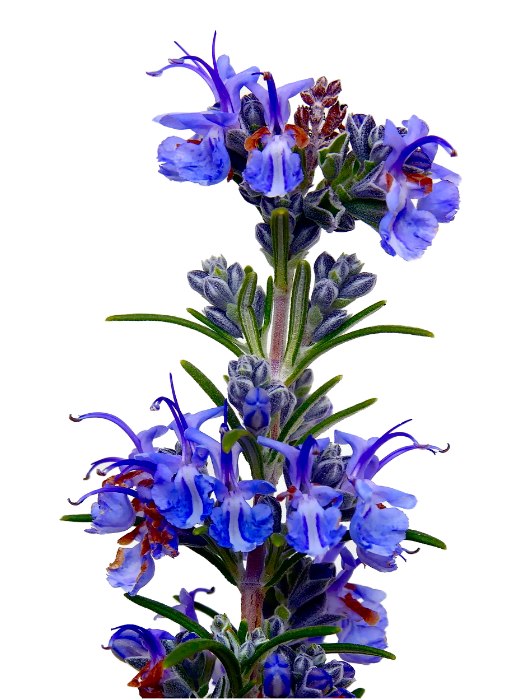 |
Rosmarinus officinalis
Member of the Mint Family
Habitat: Desert-like Conditions
Herb of Legend and of Christmas
Herbal Symbol - Love, Loyalty and Remembrance
Reputation for Strengthening the Memory
Weddings - Bridal Bouquets and worn in the Bride’s Hair
'Symbol of Remembrance'
Funerals - Buried with the Dead to signify
'Will not be Forgotten' Shakespeare’s Ophelia said,
“there’s Rosemary, that’s for remembrance” (Hamlet)
Rosemary is an Herb
Oil is extracted from the leaf and used to make medicine
Historically
The aromatic branches were burned as a disinfectant to prevent
disease.
Different preparations of the plant were used for toothache, headache,
gout, coughs and even baldness. Precious oils were used to anoint and
heal the sick.
Middle Ages
Rosemary was thought to be capable of dispelling negativity.
As such, it was tucked under pillows to thwart nightmares and visits
from evil spirits. Also burned in the house to keep the Black Plague
away. |
| Rosemary is often used: for digestion problems, including
heartburn, intestinal gas (flatulence), liver and gallbladder
complaints, and loss of appetite. It is also used for gout, cough,
headache, high blood pressure, and reducing age-related memory loss.
Some women use rosemary for increasing menstrual flow and causing
abortions. Rosemary is used in traditional medicine: for its
astringent, tonic, carminative, antispasmodic, and diaphoretic
properties. Rosemary is one of the oldest known medicinal herbs.
Rosemary oil possesses marked antibacterial, antifungal, and antiviral
properties. Rosemary oil was found to be most active against
“meat-spoiling” bacteria.
Rosemary is used topically (applied to the skin): for preventing
and treating baldness; and treating circulation problems, toothache, a
skin condition called Eczema, and joint or muscle pain such as Myalgia,
Sciatica, and Intercostal Neuralgia. It is also used for wound healing
and as an insect repellent. The powdered leaves are used as an effective
natural flea and tick repellent.
Rosemary is used as a spice. The leaf and oil are used in foods,
and the oil is used in beverages. In manufacturing, Rosemary Oil is used
as a fragrant component in soaps and perfumes. |
|
 |
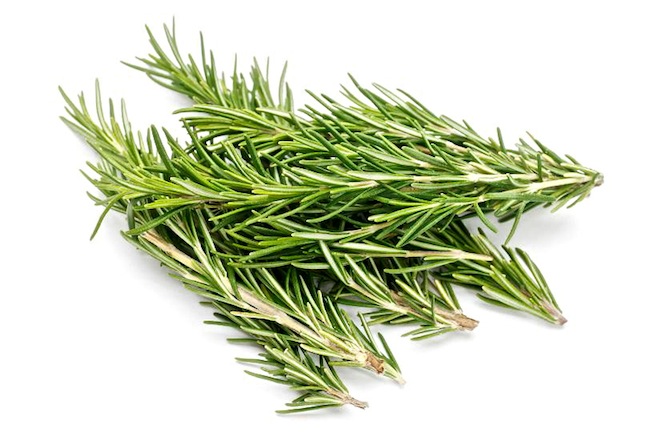 |
| Pharmacologists: use the oil of rosemary, in a diluted form,
as a tonic and digestive aid. There is some evidence that the plant is
effective in controlling muscle spasms. Used to improve memory and to
lift the spirits, it has antiseptic and antibacterial properties. The
potent fragrance will invigorate the senses. |
|
Biblical Lore: claims that a Rosemary plant will
never grow higher than six feet so as not to stand taller than Christ.
Another legend explains that the flowers were originally white, but
changed to blue when the Virgin Mary hung her cloak on a Rosemary shrub
while fleeing from Herod’s soldiers with the Baby Jesus.
Rosemary takes its name: from the Latin "Ros Maris", which
means “Dew of the Sea.” This is likely in reference to the herb’s
preference for growing along the seashore of its indigenous domain. The
Spanish began to call the plant Romero because they believed that
another Mediterranean native took refuge beneath a large Rosemary bush
to shelter herself and her young son as they fled to Egypt to escape
Herod. In honor of this brave, young woman, the plant came to be known
as Rose of Mary, which was eventually shortened to the modern
name familiar to us today.
Perhaps this association with protection is why Rosemary is still a
common ingredient in incense used to cleanse sacred spaces. It was also
thought to promote prosperity. In fact, 16th century merchants would
often hire perfumers to infuse their shops with Spirits of Rosemary.
The herb was also a popular addition to nosegays, wreaths, and other
floral displays to encourage happiness of home and hearth.
Since its primordial Mediterranean origins, the woodsy
citrus-like fragrance of Rosemary has graced gardens, kitchens, and
apothecaries throughout the world. |
 |
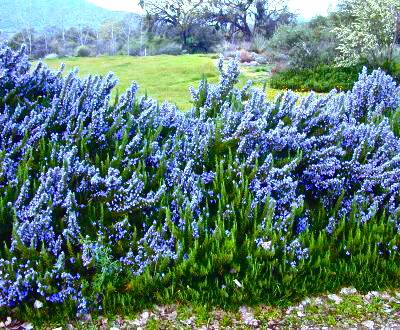 |
A shrubby, semi-hardy, evergreen perennial. It
can grow three to six feet tall with spreading, woody stems and
needle-like leaves. The foliage is dark green to gray green and has a
strong, piney fragrance. Lavender pink to blue blossoms cover the plant
in spring or even during mild winters.
Rosemary leaves: can be used fresh or dried. It is most aromatic
in July and August, so best picked then for drying. The flowers also
can be used.
Harvesting
To dry your Rosemary, bind a half dozen three or
four-inch sprigs together with twine.
Make sure they’re dry and hang them upside down in a cool place away
from direct sunlight.
Once the leaves are crispy, you can peel them easily off the stems and
they’ll keep for years. |
|
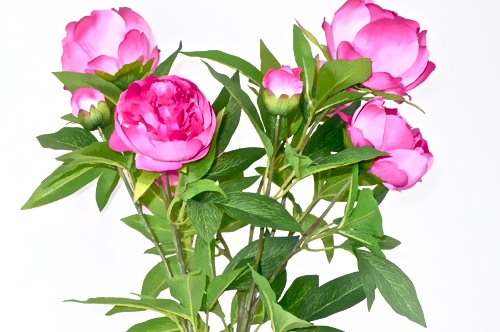 |
 |
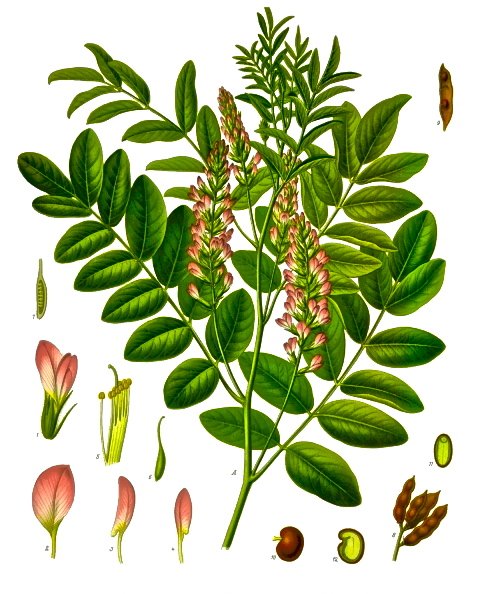 |
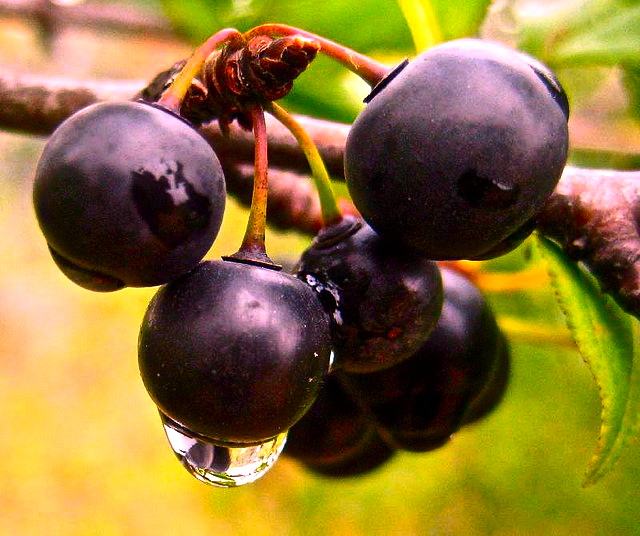 |
| Peonies and the purple flower called Skullcap,
together with Licorice and fruit from a Buckthorn Tree
form Huang Qin Tang (pronounced Hu-ang Chin Tong), an ancient herbal
medicine used in China to treat intestinal disorders such as diarrhea,
nausea and vomiting. Recently, a Western-style phased trial confirmed
that this medicine reduces gut damage caused by chemotherapy in colon
and rectal cancer patients. |
|
An ointment made from Indigo Naturalis, a dark blue
plant-based powder used in traditional Chinese medicine, appears
effective in treating plaque-type psoriasis, according to a report in
the Archives of Dermatology, one of the JAMA/Archives journals. |
| Psoriasis is a chronic skin disease for which no cure exists, only
therapies that bring it into remission, according to background
information in the article. "Traditional Chinese medicine is one of the
most frequently chosen alternative therapies in China and Taiwan, and
psoriasis has been treated for centuries with topical and oral herbal
preparations," the authors write. "Indigo Naturalis is one of the
Chinese herbal remedies that has been reported to exhibit potential
antipsoriatic efficacy." Yin-Ku Lin, M.D., of Chang Gung Memorial
Hospital and Chang Gung University, Taoyuan, Taiwan, and colleagues
conducted a randomized trial of an ointment containing indigo naturalis
in 42 patients with treatment-resistant psoriasis, and applied the
Indigo Naturalis Ointment to a psoriatic plaque on one side of their
body (usually on the arm, elbow, leg or knee) and then a non-medicated
ointment to a parallel plaque on the other side of their body. The
researchers assessed and photographed patients' skin plaques at the
beginning of the study and again after two, four, six, eight, 10 and 12
weeks.
After 12 weeks of treatment, the plaques treated with Indigo
Naturalis Ointment showed significant improvement when compared with
the plaques treated with non-medicated ointment. "The Indigo
Naturalis ointment–treated lesions showed an 81 percent improvement,
whereas non-medicated ointment–treated lesions showed a 26 percent
improvement," the authors write. |

Chronic Plaque Psoriasis |
Of the 34 patients who completed the study, none experienced
worsening psoriasis in the areas treated with Indigo Naturalis,
while the treated plaques were completely or nearly completely cleared
for 25 of them (74 percent). None experienced serious adverse effects.
Four patients reported itching after applying the Indigo Naturalis
Ointment, but only for a couple of days at the start of treatment.
"In conclusion, we present a randomized controlled trial showing the use
of topical Indigo Naturalis Ointment for the treatment of chronic
plaque psoriasis to be both safe and effective," the authors write.
"Future research for a more potent extraction from this crude herb that
can provide better absorption and convenience would help improve
treatment regimen. However, much more research will be necessary to
clarify the pharmacology of Indigo Naturalis." |
|
 |
 |
The Liquorice plant is a legume, related to beans
and peas
It is native to southern Europe and parts of Asia.
Although, it has a similar taste, it is not related to anise, star anise
or fennel.
There are many uses for Licorice Root
Chinese herbal formulas frequently contain licorice as a catalyst in
many of their Recipes. |
|
Dried Licorice Root Fights the Bacteria That Cause Tooth Decay and Gum
Disease
Scientists are reporting identification of two
substances in Licorice -- used extensively in Chinese traditional
medicine -- that kill the major bacteria responsible for tooth decay and
gum disease, the leading causes of tooth loss in children and adults.
The dried root of the Licorice plant is a common treatment in Chinese
Traditional Medicine, especially as a way to enhance the activity of
other herbal ingredients or as a flavoring.
Traditional medical practitioners use dried Licorice root to treat
various ailments, such as respiratory and digestive problems, but few
modern scientific studies address whether Licorice really works.
They found that two of the Licorice compounds, licoricidin and
licorisoflavan A, were the most effective antibacterial substances.
These substances killed two of the major bacteria responsible for dental
cavities and two of the bacteria that promote gum disease. |
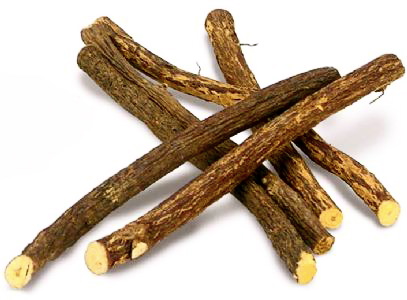 |
|
 |
| In Traditional Chinese Medicine (TCM), Liquorice is regarded as a
“panacea”. A recent study by the University Department of Anaesthetics,
General Intensive Care Medicine and Pain Therapy at the MedUni Vienna
has now, for the first time, scientifically confirmed the healing
properties of this natural substance. In their study, researchers
investigated patients who require a particularly thick tube (known as a
double-lumen tube) following lung surgery and who consequently suffer
frequent sore throats, hoarseness and coughs. |
 |
|
Inexpensive Medicine Available
Without a Prescription
As a result of the study, which has just been published
in the science journal “Anesthesia & Analgesia”, Liquorice is already
being offered to all pre-operative patients at three European hospitals.
One of the key advantages of Liquorice lies in how simple it is to use.
Liquorice is available in its pure form without a prescription from any
pharmacy. “Patients can however also buy Liquorice sticks or Liquorice
lozenges and achieve very similar beneficial effects to pure Liquorice,”
says Rützler.
Further Possible Medical uses for
Liquorice Being Researched
Exactly how Liquorice works is not yet fully understood.
The team of researchers at the MedUni Vienna has managed to identify 17
sub-substances in Liquorice, however. Some of these are believed in TCM
to have particular effects. Researchers are now working on investigating
these TCM beliefs on a more scientific basis. According to Rützler, of
particular importance in this context is Liquorice’s anti-inflammatory
effect and its positive impact on local wound healing, for example in
maxillofacial surgery. |
|
 |
|
 |
Licorice can be used to bring down diabetes and fat. A simple herb
known for 4,000 years as a part of the Glycyrrhiza plants, or
licorice, has gone under the name of natural sweeteners or herbal
medicines. The Journal of Leukocyte Biology published a new study by
researchers, who find that licorice could also reduce or stop metabolic
disorders.
Its compound, isoliquiritigenin (ILG), could prevent high-fat,
diet-related obesity, fatty liver disease and type 2 diabetes by
aborting a protein involved in them. |
| In an experiment, some subjects were given a high-fat diet, while
others consumed a normal one. Those who complained of "diet-related
obesity, type 2 diabetes and hepatic steatosis" (fatty liver disease)
have benefitted, as their disorders were reduced. Even as far back as
2010, a laboratory study found that glycyrrhizic acid can bring down
blood glucose by shooting insulin sensitivity. |
|
China is Cornering the Cannabis
Patent Market |
|
Chinese Medicine has relied on
Cannabis and Hemp Extracts for Thousands of Years
Cannabis has a long history in Traditional Chinese Medicine.
Cannabis is one of the 50 “fundamental” herbs of TCM, and is prescribed
to treat diverse symptoms. Cannabis is called Má in Chinese |
| In all likelihood, man has been utilizing hemp for its fiber, as
well as its seeds, since the very dawn of human existence. The physical
evidence for the history of Cannabis can be traced back to an
archeological site in Taiwan dated 10,000 BC, with the use of hemp in
pottery relics. The earliest known descriptions of Cannabis appear in
the ancient writings and folklore of India and China, where it was first
used religiously. Eventually, Cannabis was put to common use in folk
medicine, usually in the form of a tea or edible extract. |
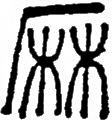 |
| In India, Cannabis has always been associated with magic, religion
and healing. |
The Chinese ideogram for Cannabis
(“Ma”) shows two plants, male and female, under a drying shed.
|
| Indian practitioners of traditional Ayurvedic Medicine still
prescribe Cannabis to promote sleep, appetite, and digestion as well as
to relieve pain. It is also considered an aphrodisiac and intoxicant.
The ancient Chinese were an agricultural civilization watching patterns
in nature, trying to figure how they fit in with the earth. The
philosophies and therapeutics the Chinese created were eclectic, tested
by time and people. What the Chinese discovered about anatomy and
physiology before modern science is astounding. |
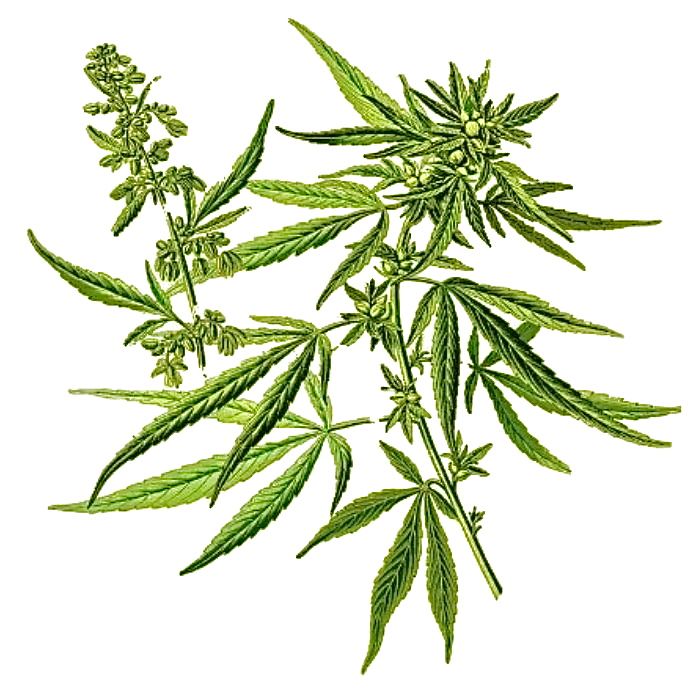 |
The earliest remarks on Cannabis use comes from the Chinese Emperor
Fu Hsi (2900 BC), whom the Chinese credit with bringing civilization. He
seems to have made reference to Ma (Cannabis), noting that Ma was a very
popular medicine that possessed both yin and yang qualities.
The oldest known Chinese written record comes from the Red Emperor, Shen
Nung, (2737 BC), who sometimes prescribed Cannabis to his patients. Shen
Nung, literally meaning the "Divine Farmer", is credited with
pioneering Chinese Herbal Medicine, which he described in the Pen
Ts'ao Ching, known as the oldest pharmacopoeia, or herbal reference
book.
Shen Nung, the first pharmacologist, sought out and investigated
hundreds of herbs, experienced their effects, and documented his
findings. Testing the plants on himself, he reportedly turned green and
died one day from a self-administered poison.
In all, Cannabis is recommended for more than 100 ailments. Shen Nung
found Cannabis effective in treating pain from rheumatoid arthritis and
gout. It was recommended for malaria, constipation, "absentmindedness",
and "female disorders". He recommended a hemp elixir that was likely a
tea of leaves and flowers, and he often accepted Cannabis (medicine) as
payment. |
|
Cannabis sativa |
Recipe for Indian Bhang |
| Hua Tuo lived much later (140-208 AD). Hua Tuo is
credited with being the first person to use Cannabis as an anesthetic.
The Chinese term for anesthesia is also composed of the Chinese
character that means hemp, followed by the means of administration. Huo
Tuo dried and powdered the plant, mixing it with wine for internal and
external administrations. Hua Tuo performed surgeries to remove diseased
tissues with local and systemic administration of his Cannabis wine
anesthetic and acupuncture to control the pain. Hua Tuo was likely using
the stronger Indian Cannabis Indica. Hemp fiber was also once a
factor in the wars waged by Chinese land barons. Initially, Chinese
archers fashioned their bowstrings from bamboo fibers. When hemp's
greater strength and durability |
 |
| were discovered, bamboo strings were replaced with those
made from hemp. Equipped with these superior bowstrings, archers could
send their arrows further and with greater force. |
Bhang is to India, what alcohol is
to the western world. This has been true for thousands of years.
Religious gatherings, weddings, receiving a guest, even war, were all
occasions in which Bhang played a prominent role |
| Enemy archers, whose weapons were made from inferior bamboo, were at
a considerable disadvantage. With ineffectual archers, armies were
vulnerable to attack at distances from which they could not effectively
return the hail of deadly missiles that rained upon them. So important
was the hemp bowstring that Chinese monarchs of old set aside large
portions of land exclusively for hemp, the first agricultural war crop |
| Patenting this knowledge is a much more recent thing—filings from
China jumped in recent years, and the country is now filing the most
patents of any country in the world via the UN’s World Intellectual
Property Organization, beating the US, and Japan a distant third.
More than half of the over 600 cannabis-related patents registered with
the United Nations’ global intellectual property agency belong to
Chinese companies, which have claimed rights to everything from
traditional Chinese medicine-related marijuana tinctures to new methods
of administering the drug, like a film that sticks to the skin.
The World Intellectual Property Organization collects patents from 186
member states that are globally enforceable and organizes them in a
searchable database called Patentscope, which shows Chinese cannabis
patents including a “Shangxia beverage for relaxing bowels” (and
preparation method thereof), a preparation for “assisting in therapy of
shivering and sweating” and broader applications like methods of
extracting cannabinoids from plants.
Milk and milk products are produced having a cannabis content. These
products are generated in that milk cows are fed at least partially with
hemp plant parts, in particular blossom material of pistillate hemp
plants, these hemp plant parts being administered as silage fodder,
dried fodder or fresh fodder mixed with usual cattle feed. |
|


